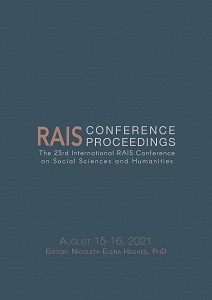Music on the Wrong Side of Art
Music on the Wrong Side of Art
Author(s): Goranka Stanić
Subject(s): Music, Sociology of Art
Published by: Scientia Moralitas Research Institute
Keywords: prejudice; music; hatred; discrimination; misuse of music
Summary/Abstract: Music and dance follow human development. The beginnings of music spontaneously hit various kinds of behaving that accompanied free movement (dance) within the community. In addition to relaxation and enjoyment, music has often been used in some undesirable behavior forms by today's standards. Music encourages soldiers to raise the morale and willingness of the army to win. This act intimidated opponents—the first example of using musical instruments in the best-selling Christian book of the Bible (Jericho). Today, music is wide-ranging and classified into different categories; this happens freely in other performers who may encounter hate speech. Music is used as a means of provoking and intimidating certain target groups. Depending on the country and the area, we come across numerous music examples on the "wrong side." The examination refers to how to use music that should inspire and raise the values of human beings in a strange way that causes fear, panic, hiding, discrimination in some groups. These people are primarily in the minority: nationality, religion, skin color, sexual orientation, or any other isolation and mockingly aggressive attitude towards selected people. Music began to use for ideological purposes during the French Revolution, and this firefighting practice spread to Europe in the 19th century. Music by manipulation became the music of hatred towards differents and others. Beautiful and sublime, placed in the proper context, music can evoke strong emotions. The desired effect is achieved by the synergy of music and text, its persistent appearance within a particular ideology, and asocial.
Book: Proceedings of the 23rd International RAIS Conference on Social Sciences and Humanities
- Page Range: 219-225
- Page Count: 6
- Publication Year: 2021
- Language: English
- Content File-PDF

